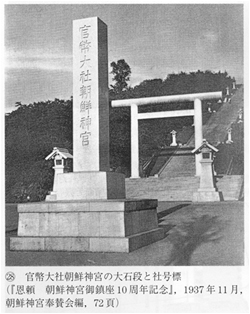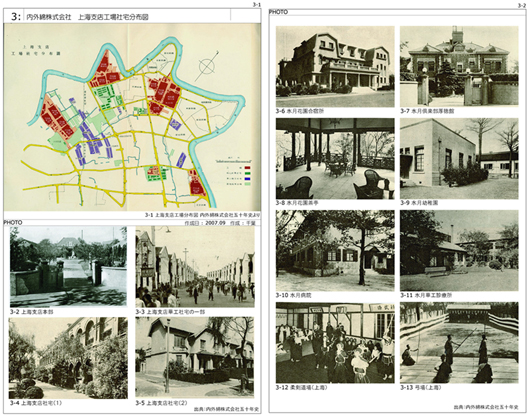- Home
- > Study Groups and their Achievements
- > Group 3: Overview of Arrangement and Systematization of the Environment and Scenery
- > Task 3
Study Groups and Achievements
Arrangement and Systematization of the Environment and Scenery
Task 3: Interpretation of Traces of Human Activity and Natural Disasters Inscribed into the Environment
- Research Process
- │
- Research Results

Overseas shrine research team:Of the approximately 1,600 shrines constructed within the Asia Pacific region during the prewar period, the team investigated 105 remaining sites. One conclusion we arrived at based on these investigations was that the transition of scenery in overseas shrine sites can be classified into four types: 1) “altered,” 2) “abandoned,” 3) “rebuilt,” and 4) “regenerated.”
Our second conclusion we came to was that the following 5 factors worked to bring about such different types of transitions in the scenery. The first factor is politics, including the relationship between postwar Japan and the country/region where the overseas shrines were constructed. The second factor is social changes within Japan and the country/region where the overseas shrines were constructed. The third factor is the level of economic development in Japan and the country/region where the overseas shrines were constructed. The fourth factor lies in the issues of cultural heritage in Japan and the said country/region. The fifth and final factor lies in the issues of “inscriptions” left by the changes in political and religious governments of the said country/region. It was confirmed that these five factors are all intricately intertwined with each other, and work to magnify or eliminate each other and shape the wealth of scenery left at the sites of overseas shrines.
Concessions research team:The team investigated the conditions of Japanese concessions in several cities in prewar China, especially with regard to layouts of the streets, factories, company housing for Japanese people and housing for Chinese workers, including interviews with Chinese people who actually lived in such situations. Photographs, plans and written materials with any information on the period the concessions were created were also collected and analyzed, and the reality of the times when Japanese people lived under the concessions and changes that are seen today was outlined. Overall, Japanese concessions were isolated to specific areas, but they were shown to have a tendency to blend into the environment after Japanese people left, with streets and buildings used as they had been left.
It was also clarified, through analysis of war scene paintings on Japanese folding screens and additional information in written materials, that the Waeseong (Japanese-style castles) were quite different in nature from the Eupseong (Korean-style castles or city fortresses ) in that they acted as bastions for invasion.

Natural disaster trace team:The team was able to follow the process of modernization and popularization of the media by combining research results gained in the first and second halves of its research – the former which outlines the technical development and social acceptance of the media from the final years of the Edo period through to mid-Meiji, ranging from Nishiki-e (Japanese multi-coloured woodblock printing) and lithographs to engravings and etchings on copper and photographs, and the latter which mainly focused on the picture postcards depicting the Great Kanto Earthquake. The characteristics of this period, which can be identified as a transitional period for the media from early modern to late modern periods, lie in the process of gradual popularization of the new media, which rose out of the antagonistic relationship between Nishiki-e, which had always been popular among the public, and the new terrain of media that had been developed based on the introduction of technology from the west. All of these materials share the same characteristics of the media during natural disasters in that they can instantly focus on the moment when the traditional hierarchy is temporarily deleted by natural disasters, which hit people with no discrimination between rich and poor. This characteristic was, in turn, shown to awaken a sensation that transcends social interests, creating a situation where people react with sensitivity to damage incurred both to themselves and to others, so that public concern tended to concentrate overtly on specific forms of media and information content.
